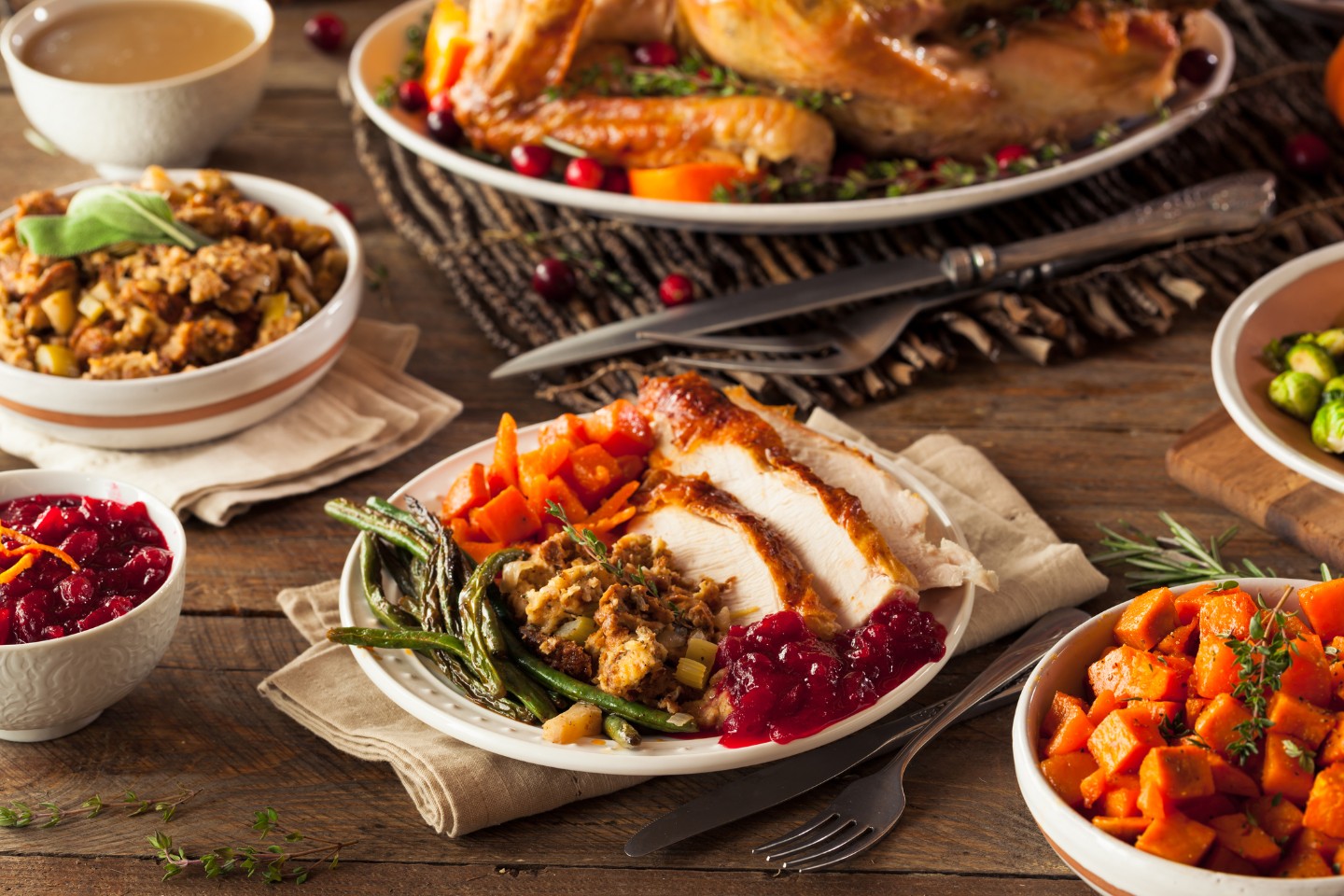Shining a Light on Celiac Disease: It's More Common Than You Think!
SEP 02, 2025Celiac disease is an autoimmune disorder triggered by the consumption of gluten, a protein found in wheat, barley, and rye.
Read More
Thanksgiving is a time for celebration, gratitude, and of course, delicious food. But for many, the fear of overindulging and derailing healthy habits can cast a shadow over the festive feast. This year, you can have your turkey and eat it too, without the guilt!
Maureen Hilderbrand, RD, LMNT, Clinical Dietitian, CHI Health St. Francis shares expert advice for healthier holiday eating. Easy lower-carbohydrate and calorie substitutions, in addition to mindful eating strategies, will help you enjoy every mouth-watering moment of a nutritious Thanksgiving meal.
Fresh Cranberry Sauce: Dump the high-sugar canned sauce for homemade. Fresh cranberries are rich in fiber, antioxidants and anti-inflammatories. Sweeten with orange juice, zest and low-calorie sweetener like stevia or monk fruit.
Whole-Grain Stuffing: Boost fiber by swapping white bread for whole-grain varieties.
Roasted Brussels Sprouts with Crispy Bacon: Roasting brings out the natural sweetness of this fiber-packed powerhouse. Add a little low-sodium, reduced-fat turkey bacon to turn an overlooked side dish into a crowd-pleaser.
Roasted Sweet Potatoes: Although starchy, sweet potatoes are still packed with fiber and beta-carotene. Skip the sugary toppings; simply roast with olive oil to highlight natural sweetness.
No-Crust Pumpkin Pie: This clever swap reduces calories while still delivering all the classic taste. Ditch the crust and use a low-calorie sweetener (stevia/monk fruit) in the filling. Top with zero-sugar whipped cream and nuts.
While carb counting has gained attention, it’s crucial to also monitor other nutrients for a balanced and healthy diet. Remember, ideal sodium is 140 ml or less per serving, low-fat is 3 grams or less and high-fiber is 5 grams or more per serving.
A protein- and fiber-packed breakfast is your secret weapon against overeating. It stabilizes blood sugar and keeps you feeling fuller longer, so you won’t over-eat when it's time for the turkey.
Often, what feels like hunger can actually be thirst. Staying hydrated throughout the day can help prevent unnecessary snacking.
Savor the aromas, textures and flavors of your meal. Appreciate the blessings around your table. Overeating can happen, but slow-down and think about how good leftovers will taste tomorrow!
The dishes can wait! A 10 minute walk can help improve blood sugar by encouraging your muscles to use glucose. It also helps digestion and can prevent that post-meal sluggish feeling. Encourage the whole family to join in.
Make your festivities about more than just the meal. Start new family traditions, play games–the more active the better, share family history, participate in a virtual 5K or take a hike!

Celiac disease is an autoimmune disorder triggered by the consumption of gluten, a protein found in wheat, barley, and rye.
Read More
Did you know that what we eat can be directly reflected in our mood? Different foods and combinations of foods can boost our mood and help with symptoms of anxiety.
Read More
Your liver does so much for the body. As a filter and processing plant, it helps break down toxins, helps store energy and more. It's time to show it some love!
Read MoreWhen you need local health information from a trusted source, turn to the CHI Health Better You eNewsletter.